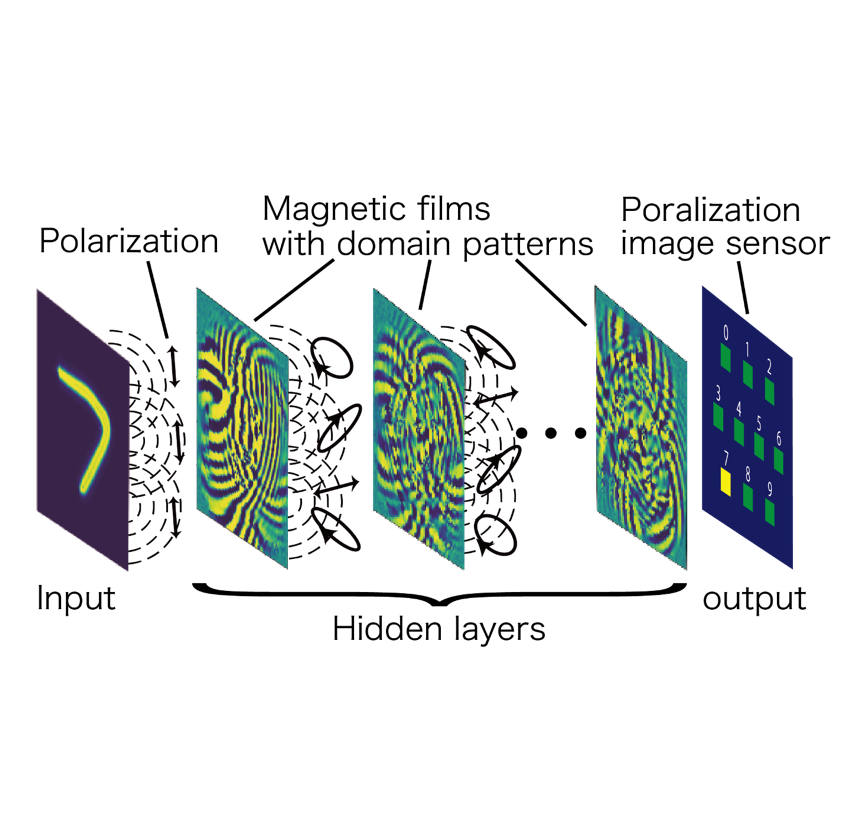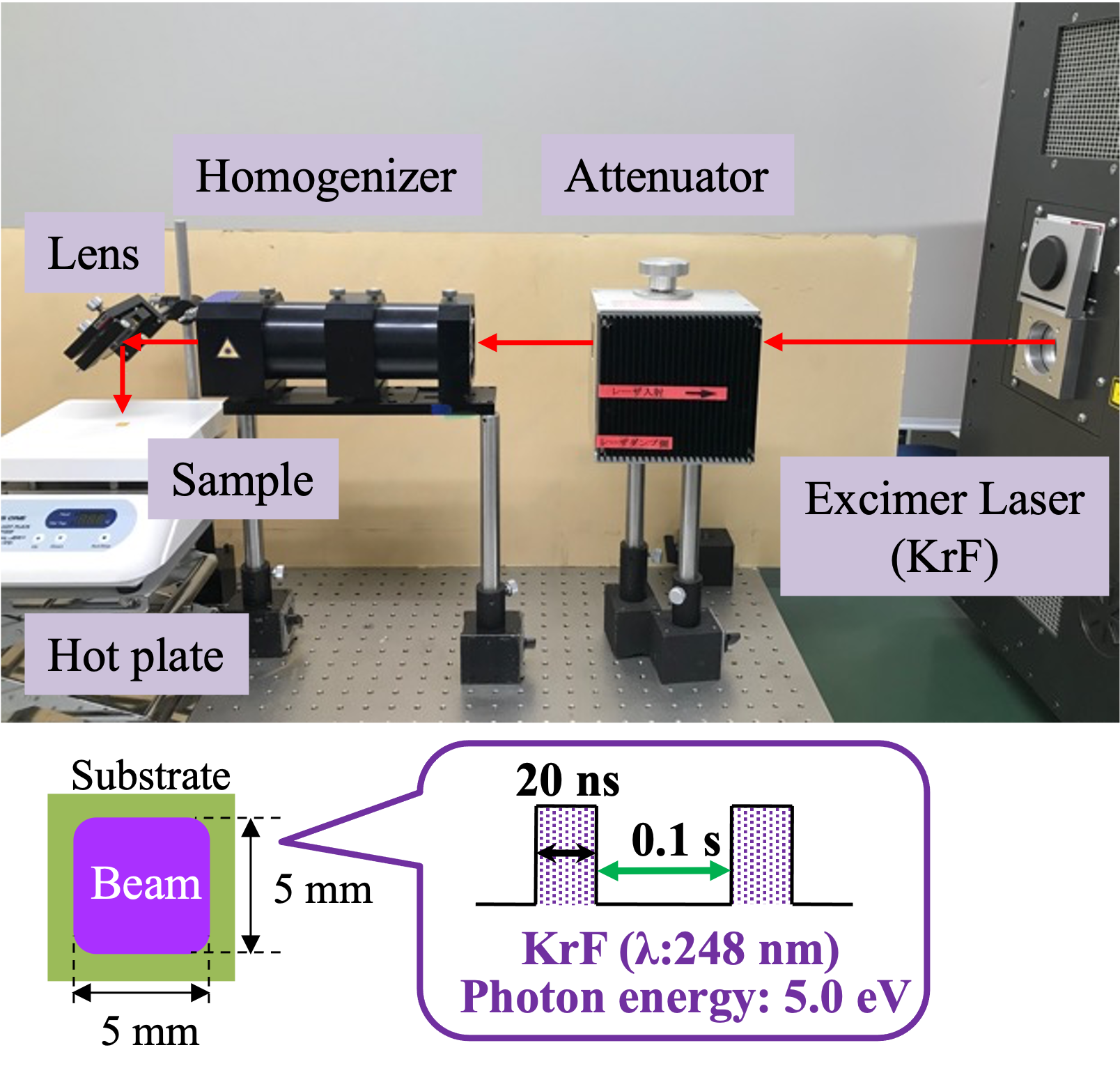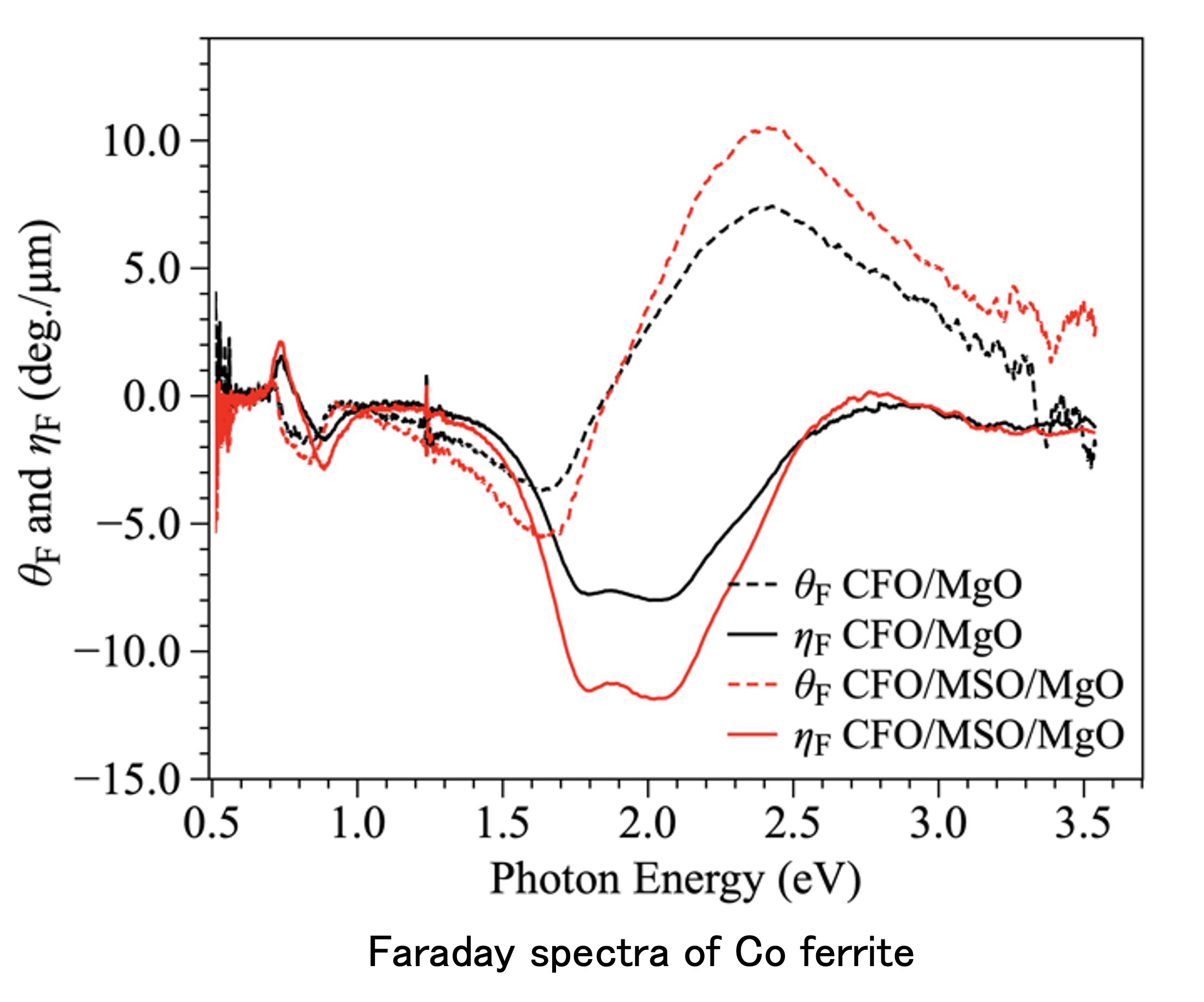Magneto-optical diffractive neural network device (MO-D2NN)
We have proposed a magneto-optical diffractive deep neural network (MO-D
2NN), in which diffraction and phase modulation of the light are caused by the MO effect of magnetic domains. Figure
1 shows a schematic diagram of an MO-D
2NN that has several hidden layers consisting of magnetic domain patterns magnetically recorded in magnetic films. MO-D
2NN realizes high power efficiency, fast calculation speed, and good scalability.
MOD method
Magnetic oxide films are prepared by the metal-organic decomposition (MOD) process, spin coating of MOD solution onto substrates, evaporating of solvents, decomposing organic materials by pre-annealing and crystallization by final annealing. High quality bismuth-substituted iron garnet films, spinel ferrite films were successfully prepared.
Laser-assisted MOD method
Laser annealing process using excimer laser is combined with the MOD method to achieve low temperature crystallization process. Repeated pulsed-laser with a pulse width of 20 nm allows to increase only temperature of films absorbing the laser energy.
Characterization using MO spectroscopy
Studying magneto-optical (MO) spectra is important not only for understanding electronic structures of magnetic materials, but also developing MO applications. We are studying MO effects, Faraday effect and Kerr effect, of magnetic materials. We are also developing measurement technique for MO spectroscopy.
Development of MO imaging techniques
We are developing novel MO imaging techniques that visualize magnetic field distributions in real time using highly bismuth-substituted iron garnet films on glass substrates that we developed. The MO imaging technique is promising for non-destructive inspection of metals, electronic circuits, magnetic materials, etc.




